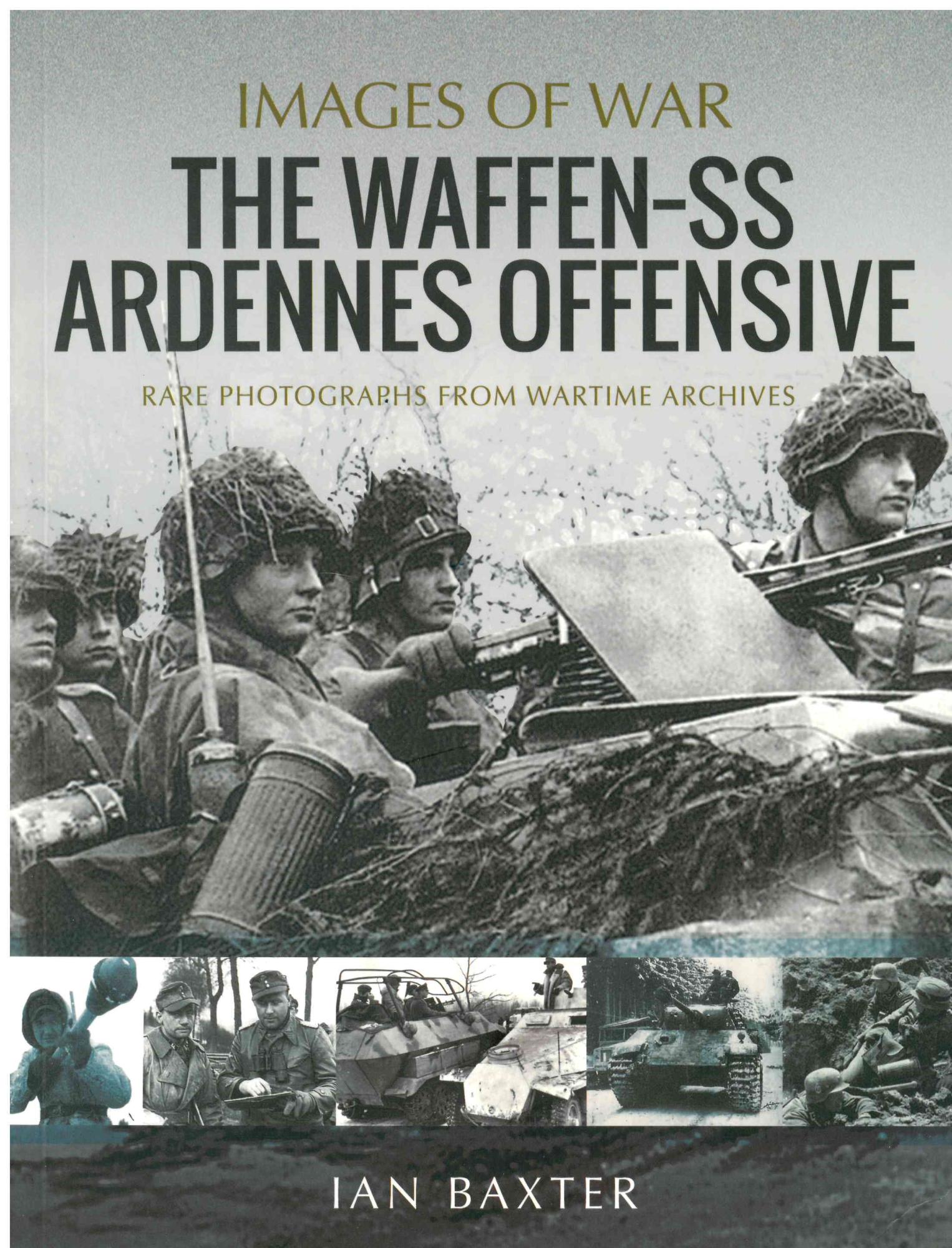The Waffen-SS Ardennes Offensive
The German Operation Wacht am Rhein (Watch on the Rhine), also called the Ardennenoffensive (Ardennes Offensive) occurred from 16 December 1944 to 25 January 1945, launched in the same area as the German 1940 attack on France, through the densely forested area between Belgium and Luxembourg. At this late stage in the war, the German military realized the only hope of stemming the Russian assault, which paused only when they outran their supply lines, was to force the Allies to surrender or accept a separate peace. Germany realized that a sudden, swift attack into this lightly held area was the only way they had any chance for success. The goal was the capture of the Belgian port of Antwerp, which would increase Allied supply lines and have the secondary effect of splitting four allied armies.
The German armed forces comprised of Army Group B, which contained the 5th and 6th Panzer Armies and the 7th and 15th Armies. The schwerpunkt (main point) of the offensive was Antwerp, and this objective was assigned to the 6th Panzer Army. As such, most of this Army was comprised of Waffen SS units, including its most experienced formation, the 1st SS Panzer Division Leibstandarte SS Adolf Hitler; it also contained the 12th SS Panzer Division Hitlerjugend (most of its junior enlisted soldiers were drawn from the Hitler Youth). This book is focused on these Waffen SS units.
The book follows the familiar Images of War format with brief introductions for each chapter followed by a lot of crisp and previously unpublished photographs. Like the German war machine, it is impressive, but doomed to fail. These photos show that through propaganda and combat photographer images; first with enthusiastic optimism, followed by the reality of defeat. The reality is highlighted by two of the almost final photos in the book: the first is a wounded soldier borne by four stretcher carriers in a very cold and bleak setting; the other shows two young Hitlerjugend boy soldier prisoners, one with his pants held up with a rope rather than a belt.
After defeat at the pivotal Battle of Bastogne, the remaining Waffen SS units were withdrawn and transferred back to the Eastern Front to face the continuing Russian onslaught. Wacht am Rhein almost succeeded, but favorable weather allowed the Allies strength in the air to return, the primarily American forces recovered from their initial setbacks and dwindling supplies for the German advance became even more scarce. This was the last major German offensive of the war, and it did a lot to weaken the Wehrmacht and deprive it of its much-needed weapons and superior combat units.
This book is a boon for modelers and there are many inspirations throughout. The dense Ardennes Forrest, the mud, frozen landscape, snow, and desperation are there, immersing the reader in the miserable hell that was the Ardennes Offensive. I was fortunate as a young Army officer to walk the ground with the Bundeswehr’s 9th Panzer Lehr Brigade (traced their roots to the Panzer “Lehr” Division, part of the 5th Panzer Army) in December 1994 on a staff ride. There was snow on the ground and the winter weather was in full effect. I was miserably cold, despite having the best cold-weather gear provided by the US Army, and nobody was actively trying to kill me. It really helped put this desperate battle into context in my mind. This book brought back a lot of memories.
Profuse thanks to Casemate and IPMS/USA for providing the review sample.














Comments
Add new comment
This site is protected by reCAPTCHA and the Google Privacy Policy and Terms of Service apply.
Similar Reviews